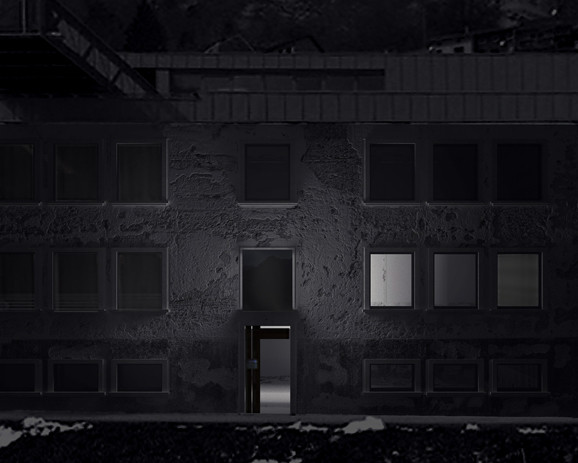
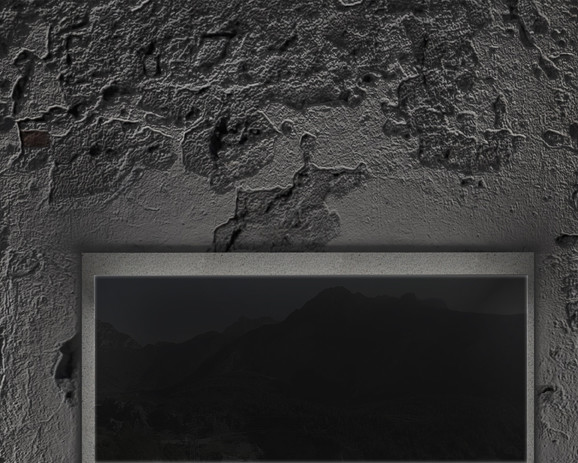
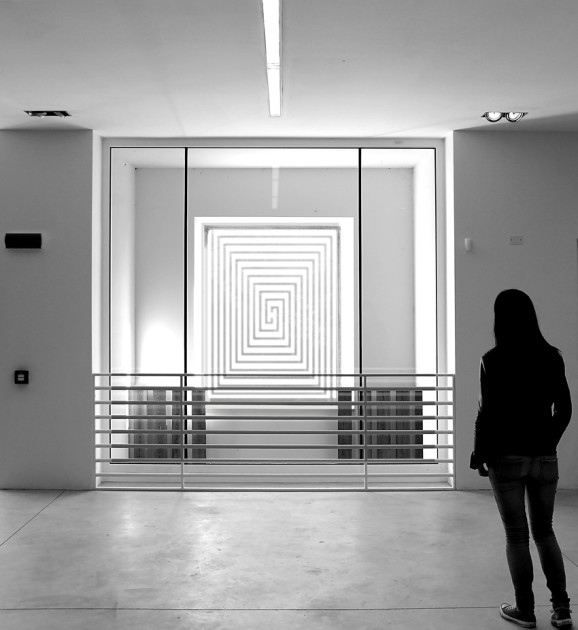
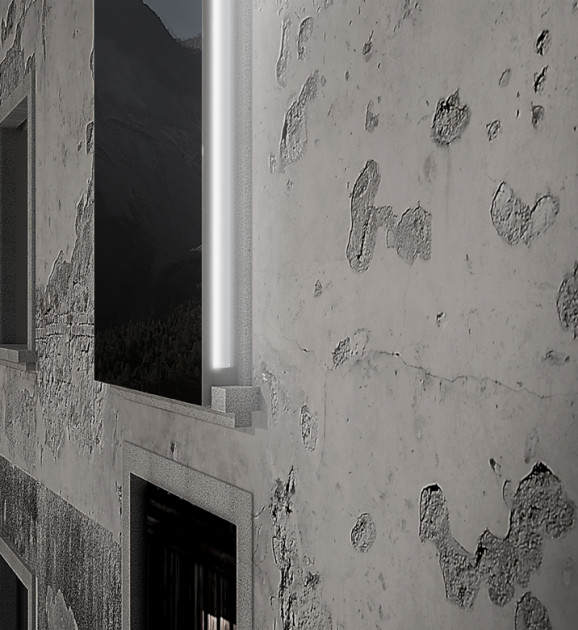
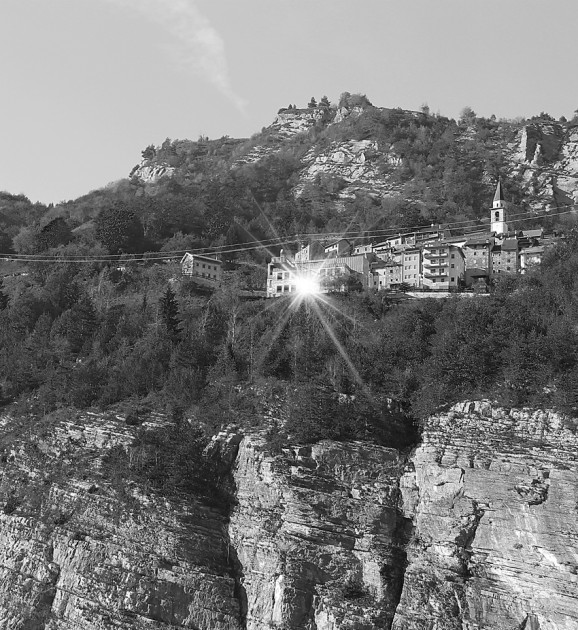
The occasion for an art installation in a place so full of memory like the Vajont dam and the villages which have directly suffered the catastrophe of 1963 should be for us a moment of reflection: first of all we need to understand how visiting these places today could be an intense and valuable experience.
We would like to suggest an “active-installation” because, this way, the observer gets to be involved in the strong visual perception revolving around it.
At the same time the installation should make people think differently about the location of the catastrophe. “To go beyond” means to be able to look at things in a new way.
The artificial light here could be the catalyst for the actions and a renewed attention for the Casso elementary school building, certainly, but for the landscape as well.
Using only one device, we create a sequence of perceptive situations that throws the observer off centre in regards of the usual viewing experience.
The light is positioned behind a panel that supports a mirror, and it coincides with the central opening of the façade: it is separated from the wall line, allowing the light to illuminate both the inside and the outside.
During the night, people will be able to observe the vibrance of the light on the irregular surface of the façade. Also, the boundary lines of the light are broken up: the light tones down but it doesn’t mark the end of the wall. From the inside the attention of the observer is caught by the artificial light coming from the opening.
On the outside, the mirror reflects the sunlight and the image of the landscape in front of it: it attracts us with a glare when we are climbing up the valley, it forces us to turn our heads if the reflection hits our eyes.
At a certain point, we can perceive that the reflected light is illuminating Mt. Toc, with a point running on an ideal line on its slope.
By a series of visual stimulations, the light drives us to move and to link the interior of the school with the exterior, thus the building with the landscape.
–
L’occasione per un’istallazione artistica in un luogo carico di memoria, come la diga del Vajont e i paesi che hanno direttamente subito la catastrofe del 1963, per noi deve essere un momento di riflessione, prima di tutto su come il ritorno o la visita in questi luoghi possa costituire un’esperienza intensa e di qualità. Abbiamo pensato di proporre un’istallazione attiva perché deve coinvolgere l’osservatore non passivamente ma attraverso uno stimolo che amplifichi la percezione visiva; allo stesso tempo però deve indurre ad una riflessione attraverso un ribaltamento del consueto atteggiamento di confronto visivo con il luogo. Andare oltre significa esser capaci di vedere in maniera nuova. La luce in questo caso può essere il catalizzatore delle azioni e dell’attenzione verso l’edificio della scuola di Casso ma anche verso il paesaggio.
Attraverso un solo dispositivo creiamo una serie di situazioni percettive che destabilizzano l’osservatore dal consueto atteggiamento visivo. La luce artificiale è posizionata sul retro di un pannello che sostiene uno specchio in coincidenza con l’apertura centrale alla facciata: questo si distacca leggermente dal filo del muro consentendo alla luce di illuminare sia l’interno che la facciata. Di notte si potrà osservare una luce di taglio sul muro che evidenzierà la profondità e la vibrazione delle irregolarità della superficie che, soprattutto in questo caso, possiede una carattere tridimensionale importante più che unicamente bidimensionale. Anche i suoi confini si rompono, la luce sfuma ma non definisce la fine del muro. All’interno l’attenzione dell’osservatore viene catturata dalla luce proveniente dall’apertura.
All’esterno lo specchio riflette la luce diretta e l’immagine del paesaggio circostante: ci richiama con un bagliore quando risaliamo la valle, ci costringe a voltarci se il riflesso colpisce intensamente il nostro sguardo. Ad un certo punto possiamo accorgerci che la luce riflessa illumina il monte Toc con un punto che percorre un ideale linea sulle sue pendici. Attraverso una serie di stimoli visivi la luce ci porta a spostarci e a mettere quindi in relazione l’interno della scuola con l’esterno, l’edificio e il paesaggio circostante. L’istallazione è pensata per essere montata rapidamente attraverso dei morsetti e senza interventi invasivi.
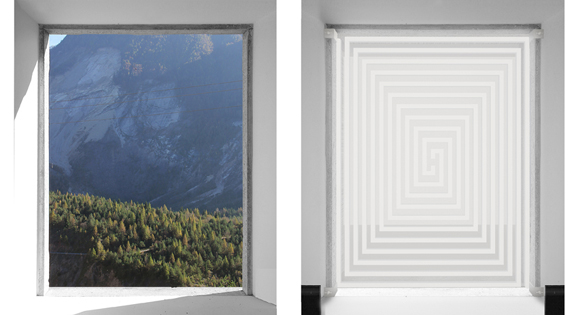
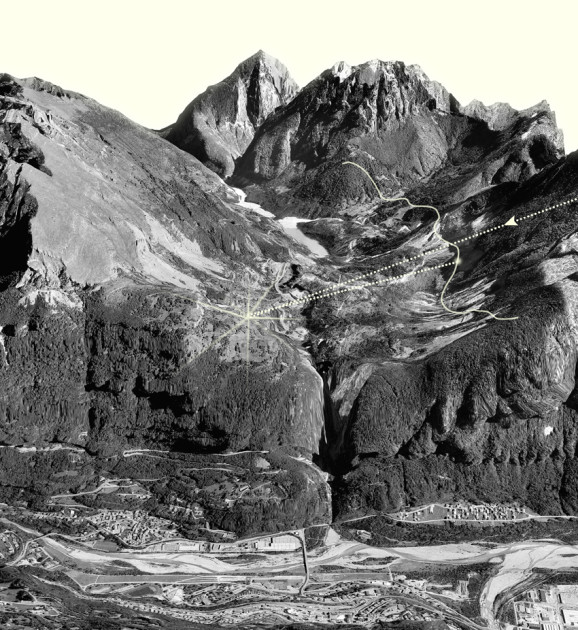
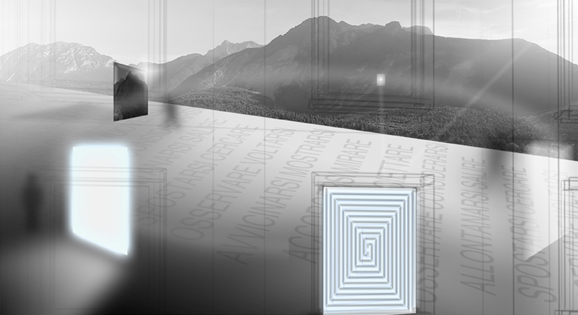
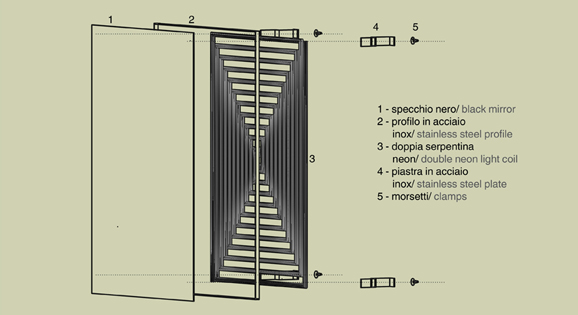
One Response to studio emfa

 udine
udine
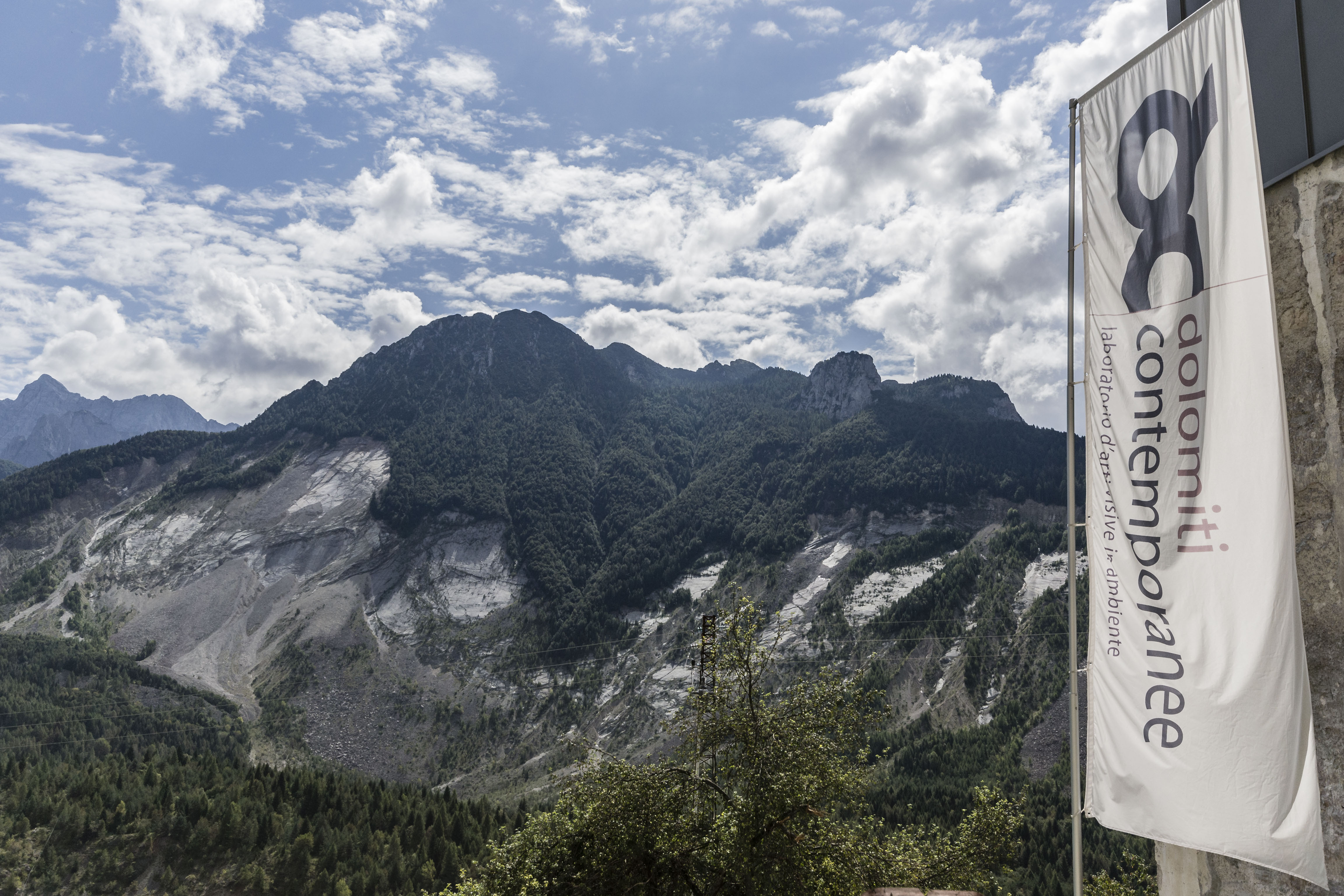
Tuesday, June 15th 2021, 2 – 4 PM, webinar panel:
two calls for vajont: fase _restart.
Vajont: [...]





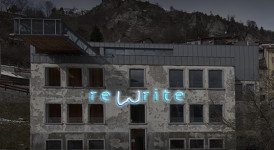
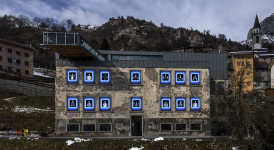
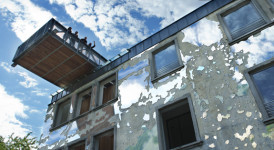

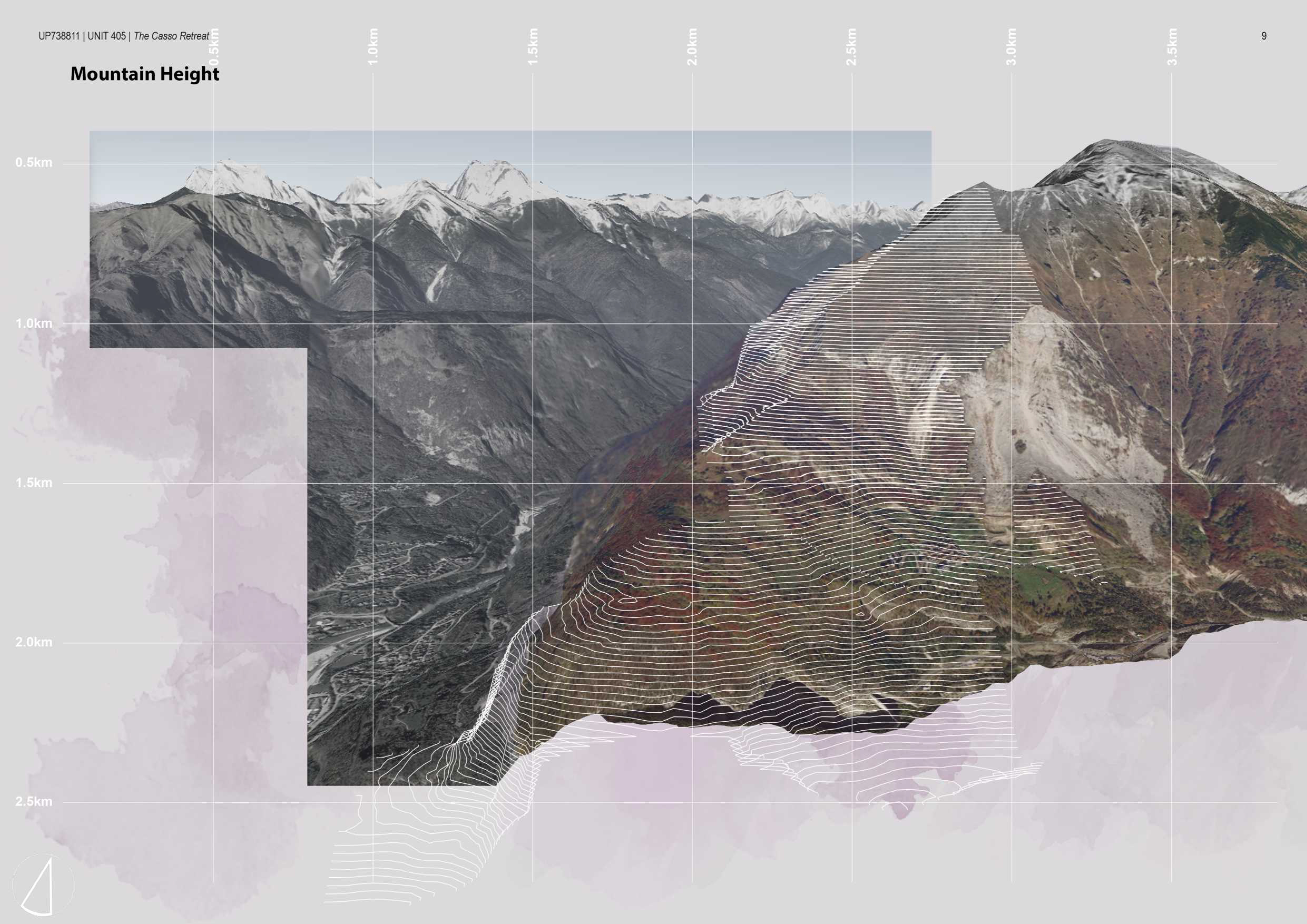









Interessante